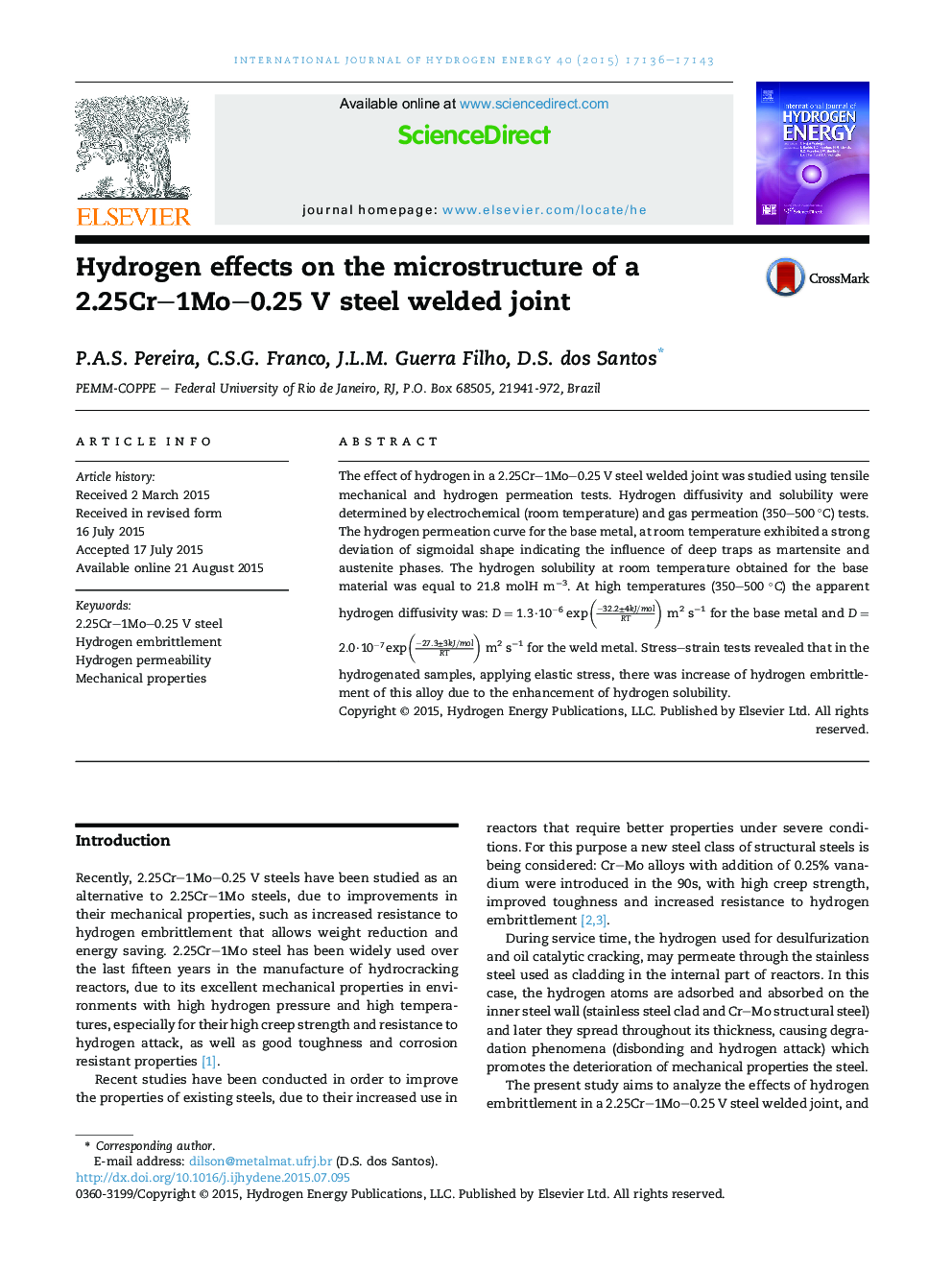| Article ID | Journal | Published Year | Pages | File Type |
|---|---|---|---|---|
| 1278413 | International Journal of Hydrogen Energy | 2015 | 8 Pages |
•Hydrogen solubility and trap in a 2.25Cr–1Mo–0.25 V steel welded joint.•Hydrogen embrittlement 2.25Cr–1Mo–0.25 V steel welded joint.•Hydrogen gas diffusion in 2.25Cr–1Mo–0.25 V steel welded joint.•Hydrogen diffusivity: D=1.3·10−6exp(−32.2±4kJ/molRT) m2 s−1 [350–500 °C].
The effect of hydrogen in a 2.25Cr–1Mo–0.25 V steel welded joint was studied using tensile mechanical and hydrogen permeation tests. Hydrogen diffusivity and solubility were determined by electrochemical (room temperature) and gas permeation (350–500 °C) tests. The hydrogen permeation curve for the base metal, at room temperature exhibited a strong deviation of sigmoidal shape indicating the influence of deep traps as martensite and austenite phases. The hydrogen solubility at room temperature obtained for the base material was equal to 21.8 molH m−3. At high temperatures (350–500 °C) the apparent hydrogen diffusivity was: D=1.3·10−6exp(−32.2±4kJ/molRT) m2 s−1 for the base metal and D=2.0·10−7exp(−27.3±3kJ/molRT) m2 s−1 for the weld metal. Stress–strain tests revealed that in the hydrogenated samples, applying elastic stress, there was increase of hydrogen embrittlement of this alloy due to the enhancement of hydrogen solubility.
